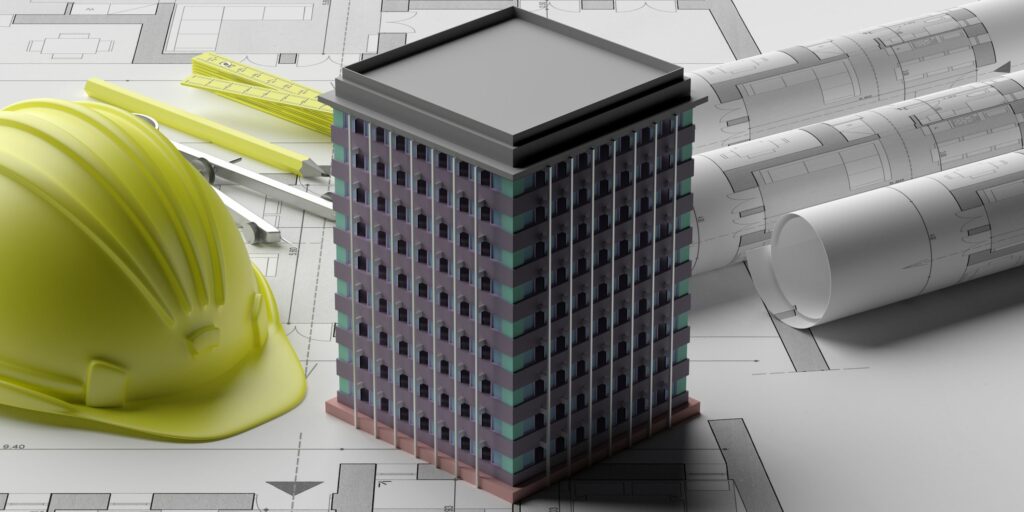Elite Compliance understands building Compliance thoroughly so that you don’t have to.
If you’re a building owner or manager, then you know that compliance with the Building Code of Australia (BCA) is essential. But what exactly is the BCA? And what does it mean for your property? In this blog post, we’ll answer those questions and more, giving you everything you need to know about building compliance. So read on to find out more!
What is building compliance and why is it important
Building compliance is a broad term that encompasses different safety regulations and codes in the construction, demolition, and alteration of buildings. Strict adherence to these codes ensures that a building meets certain standards and designs to protect the health and safety of its inhabitants. Both owners and tenants need to be aware of building compliance requirements because any failure to adhere can result in serious consequences such as violations, fines, or even civil litigation. Building compliance is extremely important in allowing people to inhabit safe structures with the trust that they will enjoy the peace of mind offered by their living environment.

The different types of building compliance
Building compliance is an important issue for any construction project. It ensures that the building meets all safety requirements, both in terms of its external appearance and internal structure. When applied to the design and construction of a building, different types of building compliance can include adherence to local laws and regulations for the type of building being constructed, as well as codes and standards set forth by governing bodies in its receipt of certification. Taking into consideration these requirements is essential to ensure that the built environment meets current objectives such as sustainability, energy efficiency, and health-promoting elements in order to guarantee quality living conditions for residents. By undertaking a comprehensive approach towards compliance, a builder can achieve successful results while avoiding any expensive or embarrassing mistakes caused by overlooking something simple yet important.

How to ensure your property complies with the building code of Australia
The first step in ensuring your property complies with the Building Code of Australia is to understand it. You should research and familiarise yourself with the relevant codes, standards, regulations, and laws that relate to your property. By becoming familiar with the applicable legislation and requirements, you will be able to identify any potential non-compliance issues in a timely fashion and evaluate the work required for compliance. Additionally, it is also worthwhile to engage qualified professionals for additional or independent support when checking for compliance, as they possess a deep understanding of the Building Code Regulations which can save much hassle and expense further down the line. Finally, regular inspections of the building are essential to ensure ongoing compliance with safety requirements and minimise the risk of fatalities or injury.

Why you should use a professional building surveyor for help with building compliance
Home and business owners alike can benefit from using a professional building surveyor for help with meeting building compliance regulations. A good surveyor will assess the structural condition of the property, as well as document any existing non-compliances so a solution can be found that meets local standards. Most importantly, they provide invaluable peace of mind, ensuring the safety of all occupants through proper inspection, trouble-shooting and remedial action. With their expertise in regulatory changes and thorough knowledge of current codes, a professional building surveyor can ensure buildings are compliant and up to date—saving you valuable time, money and stress in the long run.

The benefits of complying with the building code of Australia
Adhering to the building code of Australia is crucial for a variety of reasons. Not only does compliance ensure that all buildings are constructed safely and will stand the test of time, but it can also save builders significantly on their insurance costs. When working within certain standards, the risk of human error reducing, resulting in fewer claims being made against the builder or construction company. Furthermore, complying with the building codes of Australia will maintain consumer confidence in the quality workplace and residential structures that are produced throughout the country. Ultimately, compliance ensures projects are completed with consideration for not just safety but sustainability as well.

How non-compliance can lead to penalties and fines
When it comes to regulations, non-compliance can often have very serious consequences. Fines and penalties are a common consequence of not following the rules, and in some cases these may exceed the initial cost of compliance. Companies that ignore laws, regulations or other requirements put their businesses and reputations at risk — they could face fines, criminal charges, or even forced closure if their negligence is found to be severe enough. When making decisions surrounding compliance issues, it’s important to consider all possible costs associated with following or disregarding the applicable standards. It’s also important to remember that penalties and fines aren’t just punitive — by prohibiting certain behaviors and encouraging others, they help create a fairer and more equitable society for everyone.
Building compliance is essential for ensuring your property meets the required safety standards. There are different types of building compliance, and it is important to ensure your property complies with the building code of Australia. Using a professional building surveyor can help you ensure compliance and avoid penalties and fines. The benefits of complying with the building code of Australia include peace of mind, improved resale value, and decreased risk of accidents.
Do you have any questions on building compliance?


